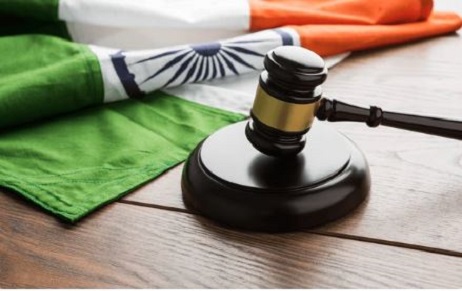Introduction Special Purpose Acquisition Companies (SPACs), also known as “blank-check companies”, are publicly listed traded…
Creators’ Paradise: Non-fungible Tokens
Introduction
Non-Fungible Tokens (hereinafter, NFTs) have seen a meteoric rise in their usage and have been linked to all types of creative works such as photographs, tweets, music albums, and other varied digital media. Garnering such stature, with an NFT for an animated GIF selling for more than $500,000, an NFT for digital art snapping up a whopping $69 million, and the auction of Jack Dorsey’s first-ever tweet cumulating for $2.9 million, it is pertinent to understand and evaluate the subject.
It is observed that NFTs are blockchain transaction records that allow people to exchange possession of digital entities like memes, media, tweets, arts, and articles in a ‘token’ type. These transaction documents are stable, have been checked several times, and cannot be deleted or modified because NFTs are backed by blockchain. Each non-fungible token has a distinct identity. As a result, no two digital entities will share a token. An NFT is simply a digital Creators’ Paradise: Non-fungible Tokens autograph or a stamp of authentication that can be applied to digital property. Simply put, an NFT can be seen as a limited-edition, signed jersey by a sportsperson – authentic and unique.
The blog delves into NFTs features; how it works; why it is so important in the present times and its legality in the Indian spectrum.
Features of NFTs
The aforementioned points pertain towards characteristics of NFTs which distinguish the same from general crypto and other digital exchanges:
- Unique and interchangeable– Each NFT contains distinctive data pertaining to an NFTs creation, related timestamps, and transaction history, which distinguishes each token from other tokens for the same as well as different assets. This makes them unique and interchangeable and differentiates them from real or cryptocurrency, which is homogenous and fungible.
- Ownership and Authenticity– Since it is coded to include comprehensive, publicly verifiable metadata and data regarding transaction history, timestamps, and owner’s credentials, and other information, an NFT will denote the authenticity and ownership of an asset.
Functioning of NFTs
Section 14 of the Copyright Act, 1957, enables the copyright owner to exercise his/her right to make reproductions and adaptations, and the same in the context of NFT is exercised as follows:
- The buyer, on purchase of an NFT of creative work, receives a digital copy of the underlying work and the tokens get added to the buyer’s digital wallet. Functioning through the mode of cryptocurrencies, the NFT can be bought and sold using Ethereum, or other accepted cryptocurrencies.
- Any illegal copying, dissemination, or adaptation of an NFT can be considered copyright infringement because it entails creating a copy of the creative work and communicating it to the consumer. The customer owns the tokens that are deposited in their digital wallet undeniably after a transaction.
- However, ownership of the artwork, as observed in Copyright law, is different from the ownership of the token. Although the purchaser has the option to transfer their copyright rights in the artistic work when selling an NFT, the digital contract governing the sale of NFTs shall specifically allow for such an assignment in signed writing under Section 19. Similar to how, by practice, an artist maintains copyright rights of artwork even though the collector receives ownership of the physical painting, most NFT transactions only have a license to use the digital reproduction of the artistic work, while the author or copyright holder holds ownership of the copyright.
Why is it important?
“India has lakhs of traditional artisans who could benefit from using NFTs to verify their original work. Add to that the growing number of artists working in digital media who can protect their creations with a tokenized “wrapper” to show that it’s an original work”
Rahul Pagidipati, CEO, ZebPay
Digital works, once accessible, can be easily replicated, reprinted, copied, and circulated at a low cost. The initial piece of material is also devalued as a part of this repetition. Furthermore, even though you were able to locate the owner, evidence of ownership is often reliant on a centralized entity that keeps track of sales and ownership.
These issues, such as ownership monitoring, value storage, and decentralization, are addressed by NFTs. NFTs allow any work of art to be tokenized which establishes a digital certificate of possession pertinent and unique to the said artist. NFTs will help ensure that digital artists get the royalties they deserve from resales or uses of their work. Because of the blockchain’s transparency, any instance of an NFT being resold can be traced by the copyright holder, who is most often the creator. Furthermore, artists who use NFTs for their works have access to a worldwide market, maintain control of their music, and may personally claim advantages such as resale royalties. NFTs are also thought to be able to repair the broken economics of online music and rebalance the leverage between artists and art mediators.
Legality in the Indian domain
While there is no stated prohibition currently preventing the residents from buying or selling NFTs, India does grapple with two issues with the transaction of the same.
Firstly, while the FEMA regulates cross-border economic activities in India, the RBI has not issued any guidance on crypto-assets or NFTs. Crypto assets and NFTs may be classified as intangible assets under FEMA, similar to software and intellectual property, based on existing provisions. The location of an NFT, on the other hand, remains a mystery.
Furthermore, since NFTs are merely a digital representation of title to an underlying asset, whether or not an NFT is a security can only be determined by the underlying asset’s status, which subsequently, creates uncertainty and divide between the legality and standing of any and every NFT transaction.
Secondly, While the government has not expressly stated its desire to ban NFTs, uncertainty over the details of the upcoming ‘Banning of Cryptocurrency & Regulation of Official Digital Currency Bill, 2019’ has cast doubt on its potential legality. To postulate the strategy which will be opted by the Government, it is pertinent to peruse through the same, and it is observed that It is possible to envision a situation under which NFTs are both a reflection of the value that is traded on the basis of having intrinsic value in commercial operation and a store of value under Section 2(a) of the act, which specifies cryptocurrencies.
Finally, considering the uncertainty of the draft Bill, every potential Bill will have to explicitly state the legitimacy of cryptocurrency-related properties such as NFTs. This will necessitate the government making a specific decision on NFTs.
Conclusion
The NFTs have been growing exponentially with reports suggesting growth of 299% in 2020, roughly garnering $250 million in token transactions. NFTs are expected to expand even more robustly in 2021, particularly as the term reaches the mainstream lexicon, thanks to the strong traction they’ve gained and the riding momentum.
NFTs, through crypto-assets and shared blockchains, have disrupted the copyright landscape by the creation of a previously untapped market. Another reason why the blockchain and crypto-asset ecosystem should be welcomed in India, with appropriate safeguards, is their ability to generate a paradigm shift by providing an online and stable market for creators’ investments. Furthermore, the advantages of NFTs for digital developers cannot be overlooked in favor of a blanket ban. Treating NFTs as a new asset class that needs special regulations would be a much better long-term approach.
The future, as predicted by varied experts, can have two things in store for the revered tokens: either a regulated, disruptive market that skyrockets and protects the copyrights, or an asset that faces the same fate as many cryptocurrencies have, and explodes.
Author: Kushagra Jain – a third-year law student of Symbiosis Law School, Noida, intern at IIPRD. In case of any queries please contact/write back to us at aishani@khuranaandkhurana.com.



